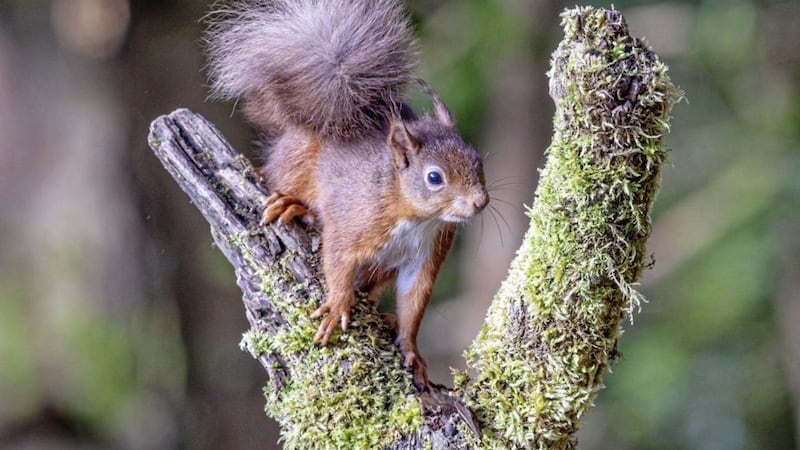THE sight of a red squirrel dashing across a path in front of you and scrambling up a tree is one of those moments that is over before you can truly relish it. They are one of our most striking native species but one which has been under threat for nearly 100 year in Ireland by the non-native grey squirrel which was introduced from America.
Greys compete for the same food sources as the reds but they also carry a disease that is fatal to our native squirrels. However, a citizens’ science survey carried out across Ireland has found an increase in the numbers of reds, particularly in the midlands.
The recovery of the red population was accompanied by a decrease in the number of greys, which have now disappeared in the midlands. It is believed the recovery of the red squirrel population is due to the re-emergence of another of our native species, the pine martin.
Pine martins had for many years been under threat in Ireland and almost disappeared but have made a tentative comeback. They are carnivorous creatures and hunt grey squirrels, but somehow seem to successfully co-exist with the reds.
According to the survey which was led by NUI Galway in collaboration with the Ulster Wildlife and Vincent Wildlife Trust, high densities of pine martins were found in the Irish midlands.
In urban areas, such as Dublin and Belfast, the grey squirrel continues to thrive. The report makes recommendations to ensure the red squirrel and pine marten continue to thrive, with further monitoring required to allow early intervention if conservation at a local or national level is required.
Key to that, of course, is the reestablishment of our native woodlands, which not only provide habitats for our native species, but also help create the oxygen that we need to stay alive.
Establishing new woodlands on a community and individual basis has been one of the most positive responses in recent years to the challenge of climate change. For centuries our native woodlands in Ireland have been decimated, leaving us one of the most deforested regions in the world.
A former landfill site outside Cookstown is an example of this positive work and has been transformed into a community woodland after 11,000 trees were planted.
Sadly the original plan to involve pupils from four primary schools in the area during a number of planting days in April had to be abandoned due to the closure of schools and ongoing restrictions.
Mid Ulster District Council decided to go ahead with the project at the former Magheraglass landfill site which saw native broadleaf trees, including downy birch, silver birch, alder, rowan, wild cherry, aspen, hazel, crab apple, guelder rose, willow, Scots pine and oak, planted across almost six hectares.
Chairman of the council’s environment committee Sean McGuigan said: “Magheraglass means ‘green plain’ and with the completion of this work the site now fully deserves such a topographical description.
“The landfill site was originally a sandpit which successfully met the waste disposal needs of the Cookstown area for two decades. To see the historic site transformed into a beautiful woodland is a very fitting tribute to the service it provided to local residents for 20 years, and will indeed form the next stage in the site’s legacy, providing the same community with a beautiful green space they can all enjoy.”
Department of Agriculture, Environment and Rural Affairs (DAERA) Minister Edwin Poots welcomed the project.
“This new native woodland will create a valuable natural resource contributing to a healthy, quality environment and help to mitigate climate change by removing carbon from the atmosphere,” he said.
The planting scheme is being managed by Indiwoods, an organisation which encourages native woodland planting and funded via DAERA Forestry Expansion Scheme, providing £24,000 towards the cost of the trees and their maintenance over the next three years.








